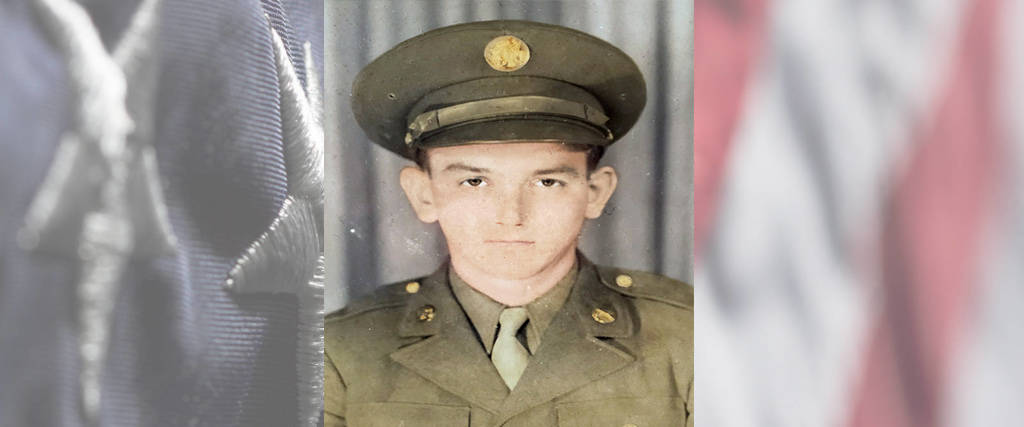U.S. Army World War II Berkeley, IL Flight date: May, 2019
By Dave Koziol, Honor Flight Chicago Veteran Interviews Volunteer
As a 20-year-old farmer from Wisconsin, Frederick “Fred” Staron volunteered for service in the United States Army in June of 1944. At that time, he did not know he would be assigned to the 5th Armored Division. Nicknamed the “Victory” Division, it would swiftly advance through Germany. This journey would take Fred to the western bank of the Elbe River, just 45 miles west of Berlin.
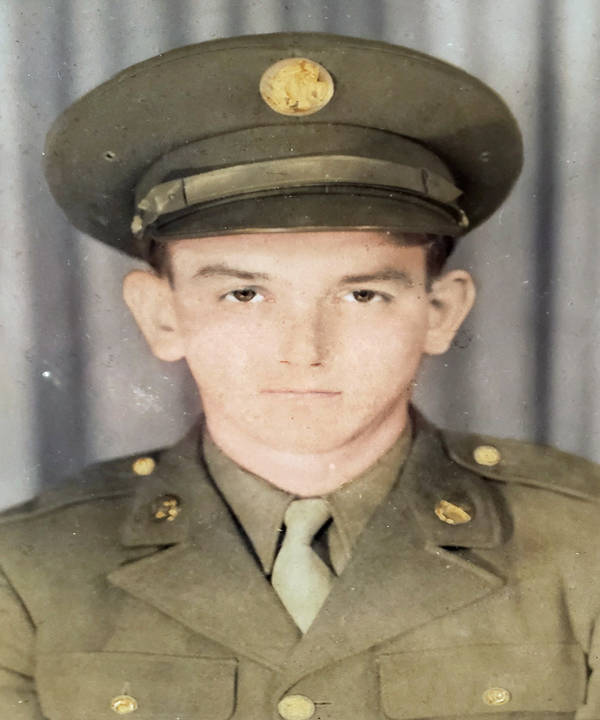
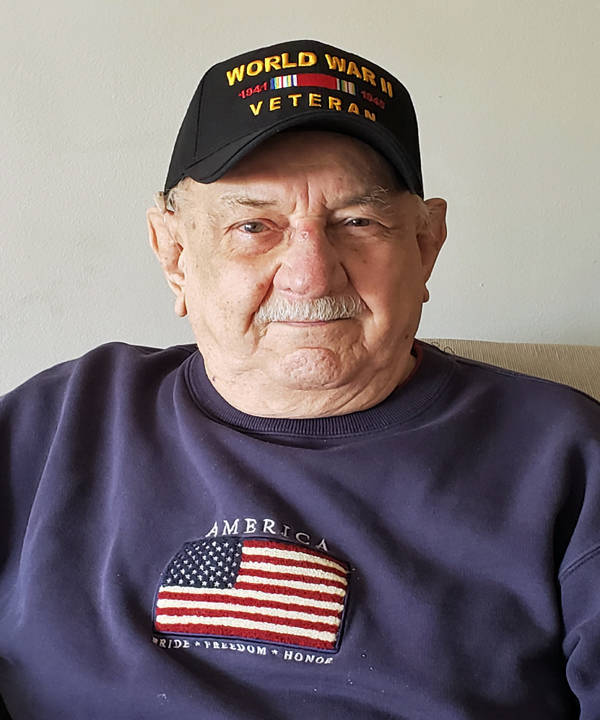
Fred was born in Thorp, Wisconsin, in June of 1924 to Joseph and Josephine Staron, farmers who had emigrated from Poland. Fred was from a very large family, including ten siblings. He had five sisters: Anne, Eugenia, Frances, Adelaide and Laurie. His five brothers included John, Sylvester, Edward, Lawrence, and Adam. Sylvester joined the Army while Edward served as a Naval Officer during the war. John and Lawrence were both drafted after the war; John went into the Army Air Corps and Lawrence into the Army. Only his youngest brother Adam did not serve and remained home to work on the family farm.
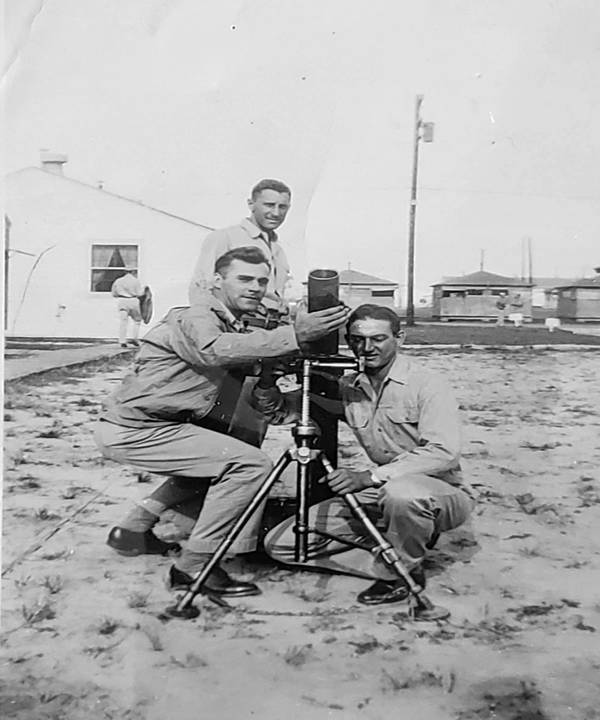
After Fred enlisted in June 1944, he was sent to Camp Blanding in Florida, near Jacksonville, for Basic Training. He would spend 18 weeks there, training as a mortarman. The weapon he was trained to operate was the M1 mortar, an 81 millimeter caliber mortar. It required two people to fire, one to sight the weapon and one to drop the round. After training, he was sent by train to Boston for what would be his eventual deployment to Europe. Fred received some horrible news in early December, 1944, while he was in Boston. He was told his 22-year-old brother Sylvester was killed in action (KIA) in Italy. Fred said, “I was angry at the Italians. I saw Italian prisoners of war (POW’s) walking around freely in America and my brother was dead.” However, there was no time for anger or grieving; Fred was on a transatlantic ship to Liverpool, England, the very next day.
From Liverpool, Fred’s next transit was to a southern English port and by mid-December 1944 Fred was transported from that port by ship to Le Havre, France. From Le Havre he was transported by truck to Eupen, Belgium, joining the division on December 24, 1944. He was assigned to a mortar squad in Company C, Combat Command A, 5th Armored Division. Fred, along with the other members of the mortar squad were mobile armored infantry riding in an armored half-track vehicle. The role of the squads in half-tracks, whether mortar or rifle squads, were to support the Sherman tanks. The Sherman tank was the main mobile fighting element of U.S. Armored Divisions. The good news for Fred was he would not have to walk across Germany.
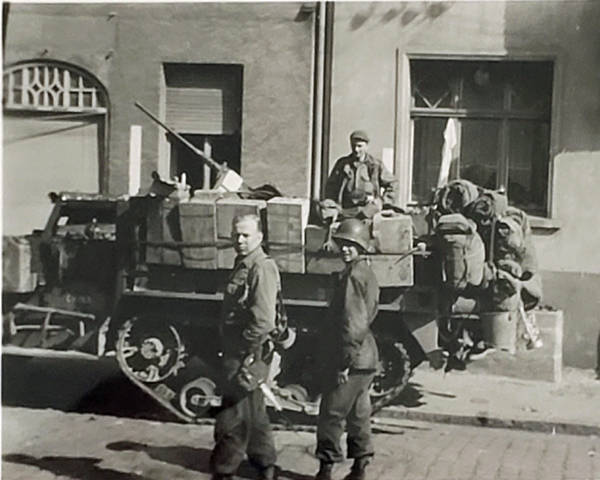
Fred said, “I was a much needed replacement after the Battle of the Bulge,” which had just about ended when he arrived in Belgium. That battle halted the American advance into Germany, but at a high cost to the Germans. By early February, 1945, Fred was in Hoensbroek, Netherlands; soon after the division was in Germany and crossed the Roer River. The 5th Armored Division would spearhead the northeast drive to the Rhine River and cross that river at Wesel, Germany.
Fred recalls his first encounter with the enemy was during his time in Belgium. He described his unit shooting down a German plane. Fred said, “All the guys jumped into the half-tracks and fired their mounted .50 caliber machine guns and shot it down.” This would not be the only time his unit would be attacked by the enemy. The Germans would fire their 88 millimeter artillery guns at the armored columns as they advanced. These artillery attacks would be in the form of air burst, the shells would explode over their heads, trying to cause maximum damage. However, this did not slow down the “Victory” Division, Fred said. “I think we did 70 miles in one day, but it varied from day to day.”
After crossing the Rhine River and advancing past the city of Munster, Fred recalls the approach to the city of Hanover, Germany. “We were on the hillside above the city and saw it below.” As they neared, they found the city practically abandoned. “The brick walls of the buildings were standing, but nothing was inside.” The allied bombings had destroyed the city, and the division passed right through.
As Fred and the 5th Armored Division advanced and occupied German cities and towns, the citizens had to turn over anything of military value. They were required to deposit their military items in the town square. This included all firearms, knives, cameras, binoculars, and anything with military markings. The soldiers, including Fred, would take advantage of this and acquire some spoils of war. He said, “We would sneak in there and grab some of the stuff out.” Fred acquired quite a few things and had them shipped back to Thorp, Wisconsin, in a wooden box he made. Fred also has a scrap book of photographs he took with a German camera he acquired during the war.
As the 5th Armored Division pushed eastward from Hanover it took them past the city of Brunswick. By April 1945, they were upon the city of Tangermunde which lies on the western bank of the Elbe River. This is where Fred’s squad would meet the fiercest resistance, as it was only 45 miles from Berlin.
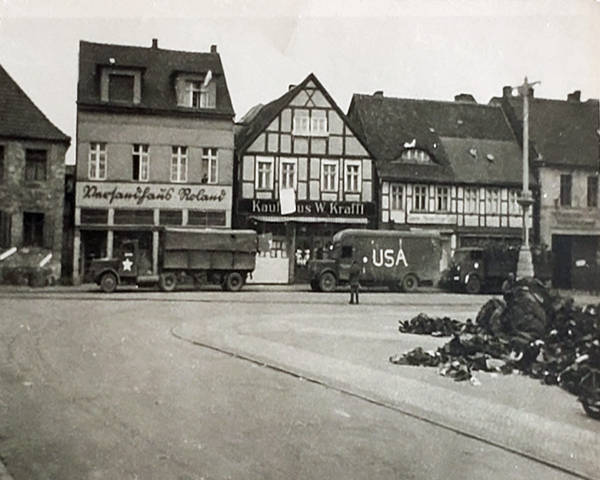
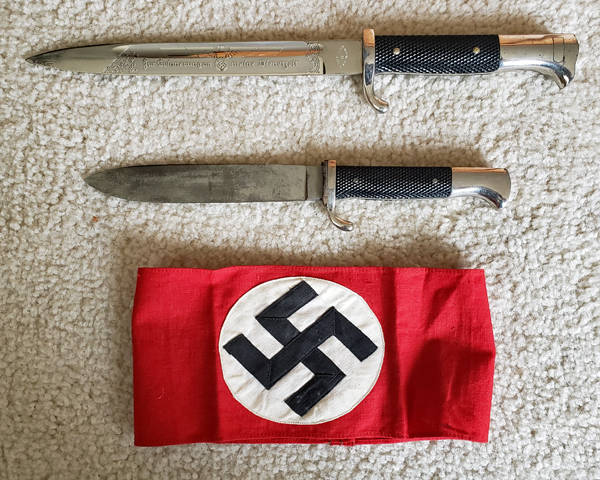
In the street fighting that ensued, one of Fred’s buddies was shot through the mouth. Fred, one medic, and their sergeant were on the opposite side of the street when his buddy was shot. Their sergeant for some reason made an unconcealed move to go help the fallen soldier. Fred said, “He sort of just walked out and was shot.” The medic asked Fred to help him go out and retrieve the fallen sergeant. This is when Fred thought to himself, “They aren’t going to shoot the medic because he is wearing the Red Cross armband on, but they might shoot me.” He went with the medic anyway and pulled the sergeant into a doorway. It was to no avail; the sergeant was already dead. The good news that day was his buddy who was shot through the mouth survived the war.
Another incident at Tangermunde for Fred’s squad was an attack on a fortified position. Fred fired six 81 mm mortar shells, the most he had ever fired, into the enemy defenses. His fire was directed by his lieutenant who was viewing the enemy from a second story window. Unknown at the time, Fred and the other enlisted soldiers were firing into German defenders of a POW camp which held American prisoners. These German defenders, which were the prison guards, fled during the attack and the American POW’s came out waving. Fred believed his lieutenant knew there were American prisoners close, but did not want to tell his men. This was the proudest moment of Fred’s service, he had helped free American POW’s.
After taking the city of Tangermunde, the 5th Armored Division was ordered not to advance across the Elbe River. The 5th Armored Division’s occupation of Tangermunde was the furthest northeastern advance into Germany of American forces. The order not to cross the Elbe River allowed the Russians to capture Belin and the war in Europe would soon be over.
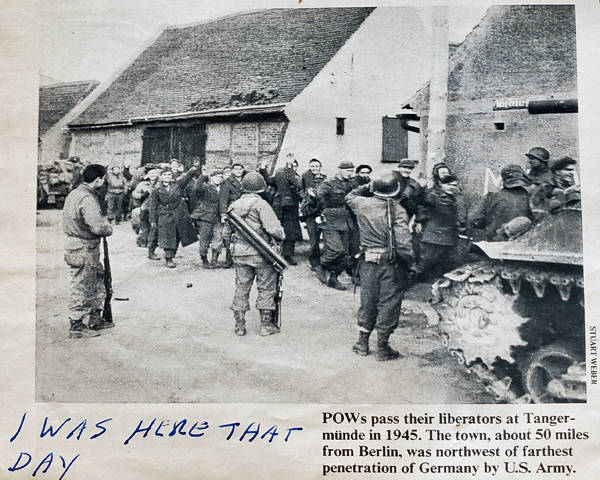
On May 8, 1945 the war in Europe indeed came to an end, and Fred remembers being in the city of Stendal, just a little northwest of Tangermunde. Soon after the war ending, Fred was transferred south to Erfurt, Germany where he became part of the Army of Occupation. While serving in the Army of Occupation, Fred figuratively turned in his mortar for mechanic tools. He received on-the-job training and worked on keeping trucks and jeeps running. After a few months in Erfurt, Fred was transferred into the recently established American Sector of occupied Germany. After a few more months, his two years of service was over, and Fred was transferred back to the U.S. where he was honorably discharged.
His service awards include: Combat Infantryman Badge (CIB), Good Conduct Medal, European-African-Middle Eastern Campaign Medal with three bronze campaign stars, World War II Victory Medal, and Army of Occupation Medal with Germany clasp.
He arrived back in the U.S. by ship to the Port of New York, then took the train to Chicago to visit one of his sisters. After a short visit there, it was back home to Thorp, Wisconsin. After a couple of years back on the farm Fred decided, “Farming was no longer right for me,” and moved to Chicago. Fred got a job as a lathe operator at Aetna Bearing Company in Chicago and worked there for forty years.
It was at Aetna Bearing in 1952 where he met his wife of 65 years, the lovely June. Fred and June married in 1953 and resided in Berkeley, IL for the last 58 years until her recent passing in 2018. They have four children: Margie, Anita, Tim, and the youngest Ken, who passed away in 2005. Fred currently still resides in Berkeley today and for fun, sells items he has collected over the years on eBay.



